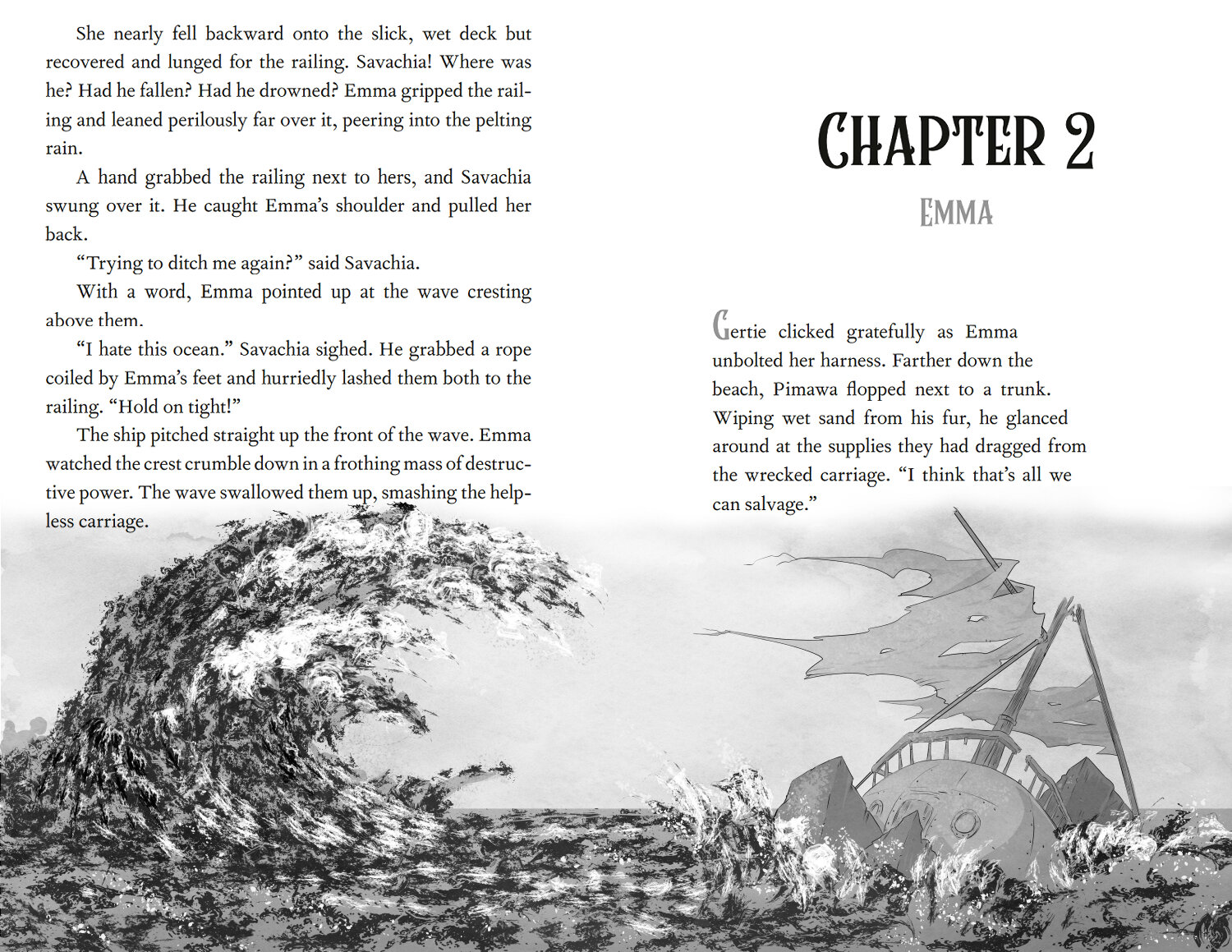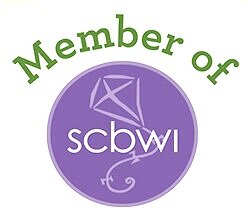Illustration from “The Conjurers” book three middle grade fantasy series.
Today’s preview of “The Conjurers” book three comes from the end of chapter one. One of my favorite tips for writing any story is to pull the reader from one chapter to the next. Theres a bunch of ways to do this. My favorite is mini cliffhangars. As you can see from the drawing above, chapter one ends with a ship wreck (technically a “carriage” wreck. If you’ve read the first two books you know what that means).
I try placing an illustration at the end of every chapter. It helps amplify the “what happens next” element of the text. In this case, the reader is left wondering about the fate of our heroes. From a technical aspect, I drew the ocean with a lot more ink than I had in book two. I wanted the drawings in book three to have more bite. The kids are a little older, a little more mature and so are the readers. The heavier lines and tocuh of realism softens the cartoony aspect the previous books.
And here are a few more simple tips for writing middle grade novels:
1. Conduct thorough research and include dialogue and scenes to create authentic prose
We need to ensure that we are not crafting a cookie-cutter story.
The first step is to conduct thorough research and include dialogue and scenes to create authentic prose. We should start with the basics and ask ourselves, what kind of story do I want to tell? What do I want the readers to take away from my article? Who is my audience? What are their needs, wants, desires?
2. Use simple grammar, sentence structure, and vocabulary to make the reading experience pleasurable
This is a beginner's guide to writing in a more human-like way, and it's not as hard as you might think.
The main obstacle is the preference for simple grammar, sentence structure, and vocabulary.
For example, "I love to eat chocolate" is less complex than "I really enjoy the scrumptious taste of chocolate."
We also need to use verbs instead of adjectives when describing someone or something.
Instead of saying "The apple tastes sweet," we can say "The apple tastes delicious."
3. Know your audience and what they like in their books e.g. funny dialogue, character development, or suspenseful plot twists
Know your audience and what they like in their books.
For example, if you are writing a book for children, you'll want to make sure that it is filled with funny dialogue. If your book is more action-oriented, develop the characters so the reader can get invested.
4. Seek feedback from publishers or writing organizations such as SCBWI
Although this is not a group you should join to find a publisher, it will help you narrow down your list of publishers to send your work to. If you are unsure what publisher would be the best fit for your book, SCBWI is an invaluable resource for writers in children’s publishing.
SCBWI stands for the Society of Children’s Book Writers and Illustrators and it is an organization that provides resources and networking opportunities to those who want to get started or advance in children's publishing. It also offers workshops, webinars, conferences and regional events for its members.
Every year SCBWI publishes the Writer's Market which contains up-to-date listings of all the agents, editors, publishers, contests, festivals and more in the children’s
5. Take classes on how to write middle grade novels from an experienced teacher so your project can be successful
For those who are interested in writing novels for young readers, there are a few guidelines to follow.
1) You should always come up with a backstory for your protagonist even if you have not revealed it to the reader.
2) There are a few common mistakes that writers commonly make when they build their plots. One of the most common is focusing too much on their protagonist and neglecting other characters or events. This can lead to a story that has no suspense, tension, and conflict.
3) Keep your sentences as short as possible and make sure that you use descriptive language.
4) Use simple words that children can understand instead of big words.
Key Elements of a Good Middle Grade Novel
Some key elements of a good middle grade novel would be:
- The main character should be relatable to the reader.
- The story should have an interesting plot that is not too predictable.
- The book should have likable characters and a happy ending.
- It should focus on aspects of the world that children are most interested in, such as school, friends, family, pets, or hobbies.
Five Bonus Tips for Writing Great Middle Grade Books
1. Write with a child's voice in your head
2. Ask yourself, "What would make this an interesting story?"
3. Make sure all the stakeholders are on board before you start writing.
4. Aim for a diverse cast of characters to help readers see themselves in the story.
5. Create a full character arc to give readers someone to root for.
That’s it for today! Again, send any and all questions my way and let me know if you’re enjoying these posts.





